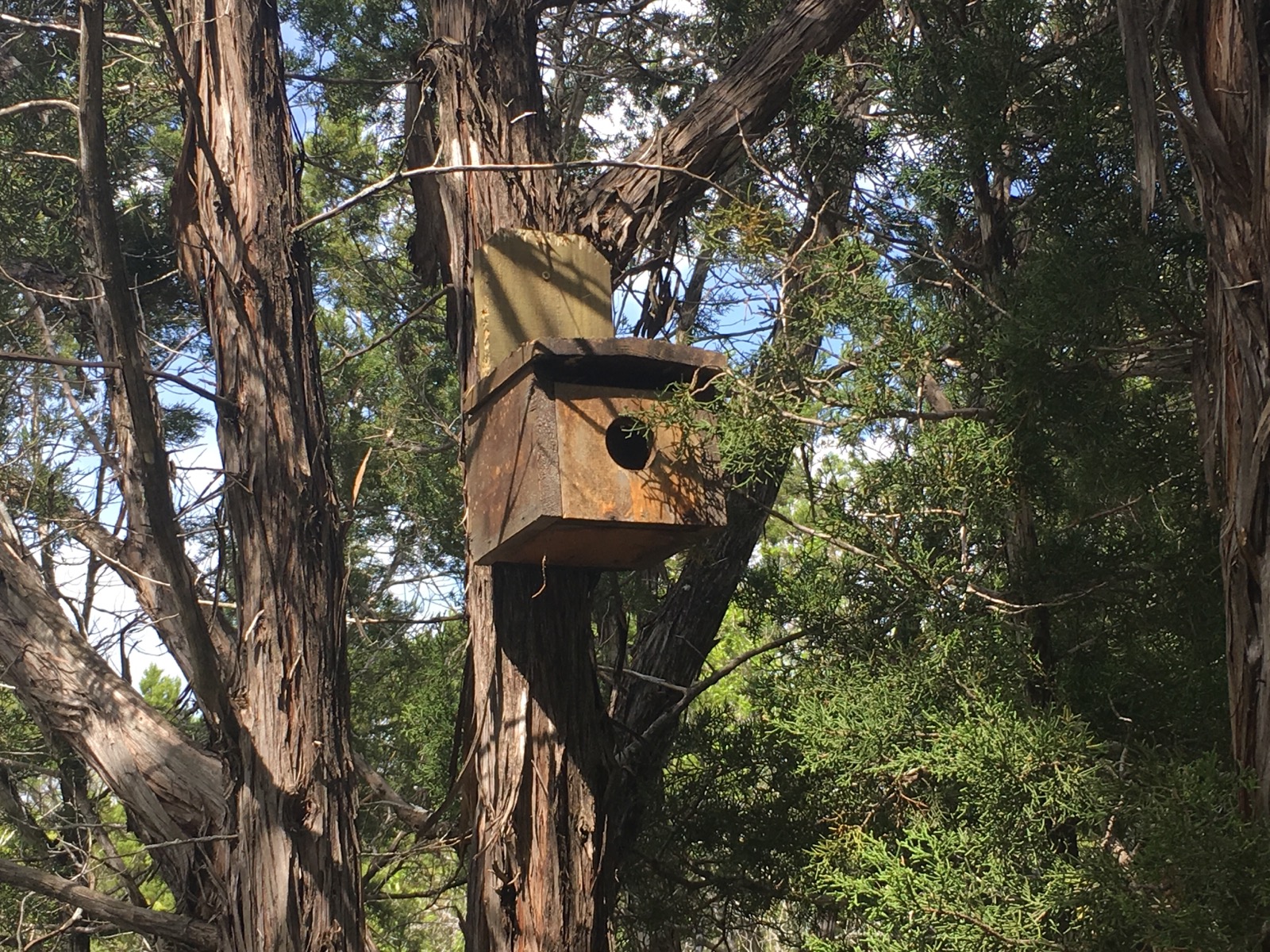The when and how of birds and nest boxes
You’ve thoughtfully chosen the location and carefully mounted the nest box. A sweet invitation to wildlife addressed and posted. Visions of chirping nestlings and doting bird parents dance in your head.
And then…nothing. The ice in the party punch bowl melts. The nest box remains an empty wooden container with a hole.
Why didn’t they come?
It may be in the timing
Some nesting birds may begin scouting for nest sites as early as January or February. Texas is one of the earliest breeding grounds for Purple Martins, for example. Scouts arrive along the Texas coast in early January. Trails.com reports that the Austin area reportedly can see the first birds arrive as early as mid-January, while most of the south and east parts of the state start to see arrivals around the first of February. If you put up a Purple Martin house after early January, you may have already been too late. Similarly, Eastern Bluebirds begin nesting as early as mid-February. In short, while it may be more pleasant for you when there isn’t a frigid bite in the air, the ideal time for you to prepare nest boxes is during the winter to make sure they’re ready for your early party arrivals.
It’s all in the details
Not unlike humans, certain birds like their homes a certain way. Do your nest boxes fit their preferred criteria? For example, robins prefer open fronted nest boxes whereas tits prefer small boxes with a small entry hole. Check out these additional tips from British Bird Lovers’ “Why Birds Won’t Visit Your Nest Box”:
- Ensure your bird box is placed at a suitable height. Many people make the mistake of positioning their bird boxes too high up. Many birds prefer to nest nearer the ground in shrubs and bushes so find a position that is similar to places where birds would naturally build their nests.
- Birds will always look for somewhere safe to build their nests so if your bird house is vulnerable to predators such as cats, squirrels and rodents they will not use it. Position your bird box out of reach of predators and you could include safety features such as baffles to help protect birds using it. Choose a bird box with a small entrance hole which will also prevent larger birds entering and which may even eat eggs or hatchlings.
- If you choose to paint your bird box ensure it is suitable for birds. Toxic paint could kill birds and a brightly painted bird box may attract predators.
To help you nail the right criteria for your nest box, Texas Parks & Wildlife Department (TPWD) has data for some of the more common birds including suggested size of the floor, depth of the box, entrance height above the floor, entrance diameter, and recommended height above ground. Get the details for Eastern Bluebird, Carolina Chickadee, Carolina Wren, House Wren, Tufted Titmouse, Red-headed Woodpecker, Northern Flicker, Barn Owl, Screech Owl, and Wood Duck on the TPWD website here.
And, ultimately, as Birds & Blooms notes in Attracting Nesting Birds with Better Birdhouses, “not every birdhouse will be successful in attracting birds. The best way to increase your odds is to offer multiple houses of several types.”
When they do come
If you’ve succeeded in attracting birds to your nest boxes, your wildlife management efforts are working. Cheers! Now what? Attracting nesting birds means there will be nests and eggs and chirping baby birds in that box. And, eventually, more birds leaving it than had originally arrived. Which is the goal. When an Eastern Bluebird, for example, takes up residence in your nest box, here’s a nutshell – eggshell? – version of what happens inside from Cornell Lab of Ornithology’s NestWatch:
- The male Eastern Bluebird displays at his nest cavity to attract a female. He brings nest material to the hole, goes in and out, and waves his wings while perched above it.
- The female makes the nest by loosely weaving together grasses and pine needles, then lining it with fine grasses and occasionally horse hair or turkey feathers.
- The clutch size is typically 3-5 eggs with an 11-19 days incubation and a brooding period of 17-19 days.
- After a successful clutch fledges, the female bluebird will often go off to build a second nest, leaving the male to care for the fledged young.
For data on many more common nesting birds, visit the NestWatch site here.
Patience is a virtue
We all like immediate gratification but when it comes to attracting birds to your nest boxes, patience is definitely a virtue. If you waited too late this year to put up your nest boxes, on the bright side, they’re already in place. Just make sure they’re clean and ready and, using the tips above, consider if they’re really in the right place or if they should be moved or otherwise improved. As the National Wildlife Federation advises: “The main thing about attracting birds…is to let it happen over time and enjoy it. As birds begin to find your place you will be amazed at how many you see.”
A note about the party crashers
While all of the careful planning and plotting of custom-crafted nest boxes may not lure birds as you hoped, you can almost always count on a party crasher or two taking up residence in another – possibly more inconvenient – location. A Landmark friend who, to date, has failed to lure Purple Martins to the new house he installed this year walked into his shed last week to find a nest built, most likely by a naughty little wren, in his post hole digger.










